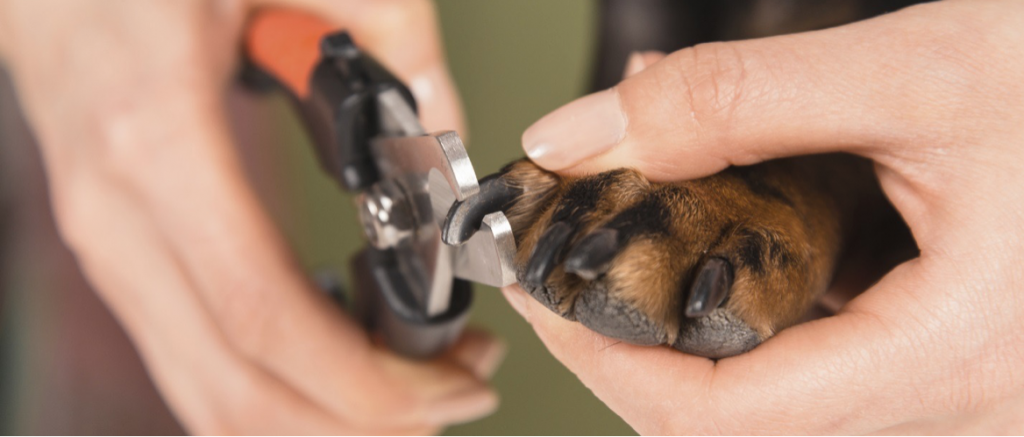By Christian Ackman
Trimming my dogs’ nails is my least favorite thing to do to them. They dislike it, and the fear of making them bleed is always in the back of my head. However, since I’d rather do it myself than take them to the vet or groomers, I have schooled up on the topic, and wanted to share some of that insight with you.
First of all, you might find yourself asking why it’s necessary to trim your dog’s nails regularly. Some dogs are able to wear their nails down on their own, but this is rare. When a dog’s nails get too long, they experience pain. Walking on hard surfaces pushes the nail back into the nail bed. This either leads to the toe twisting to the side to compensate for the long length, or puts pressure on the toe joints. Happening every step they take, this repetitive motion makes their toes extremely sore, and may eventually lead to arthritis.
When beginning the process of trimming your dog’s nails, it’s important to start by purchasing the proper tools.
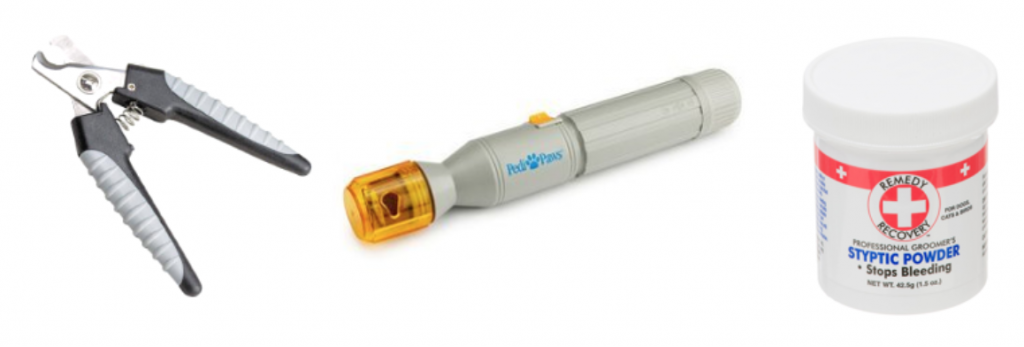
- Scissor Trimmers are the safest and most painless nail clipper for dogs. These trimmers cut the nail, rather than crush it. Guillotine style trimmers can be very painful for your dog. Smaller size clippers are recommended, as they allow for more control and accuracy. Only giant breeds need to use a large trimmer. There are many great options when shopping for scissor trimmers.
- Nail Grinders are a great way to file down the nail, and reduce any sharp edges after trimming. These have grown in popularity, and some people are using grinders alone to shorten their dog’s nails. While this takes a while longer, it is a gentler approach, especially when your dog is scared or dislikes the nail trimmers.
- Styptic powder or cornstarch is important to keep close by while trimming your dog’s nails. If you accidently cut the nail too short and cut the end of the quick, the nail will bleed. Sometimes it can be difficult to stop. These powders stop the bleeding and allow the nail to clot.
Now that you have the proper supplies, its important you understand the anatomy of a dog’s nail, and how close you should cut.
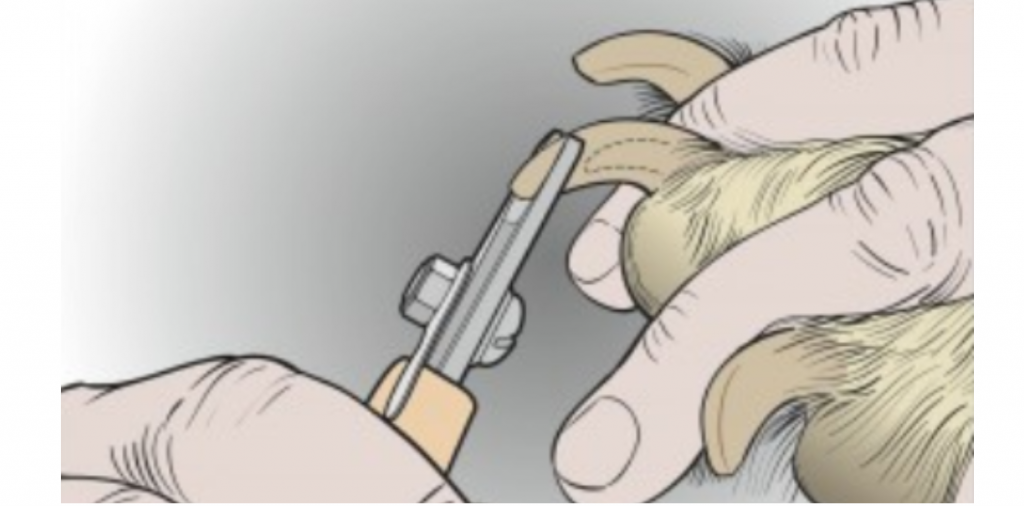
Dogs with white nails are much easier to shorten. You can see the quick, or the blood supply from the outside of their nail. You cut the nail just short of the blood supply, keeping their nail as short as possible without hurting the dog.
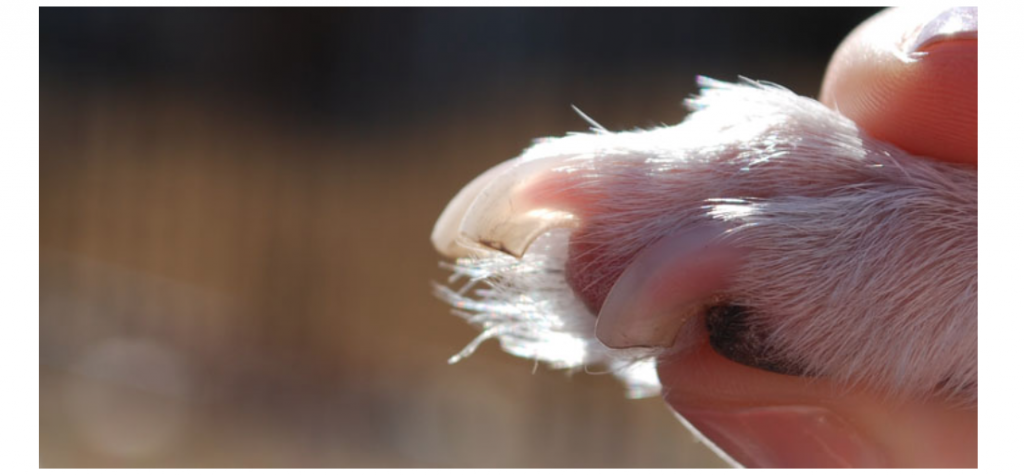
Dogs with black nails are much more difficult to trim. You cannot see the quick of their nail when it is solid black, so you have to go at it “blindly”. The best approach is to trim a small amount of the nail at a time, until you see the black “core” of the nail. This black spot will be inside a grey circle on the end of the cut nail. Once that grey circle and black spot are visible, don’t cut the nail any further. You are getting close to the quick. This can be a difficult process for dogs who dislike their nails trimmed, as the number of cuts is increased greatly. Also, black nails tend to be harder and more difficult to cut through.
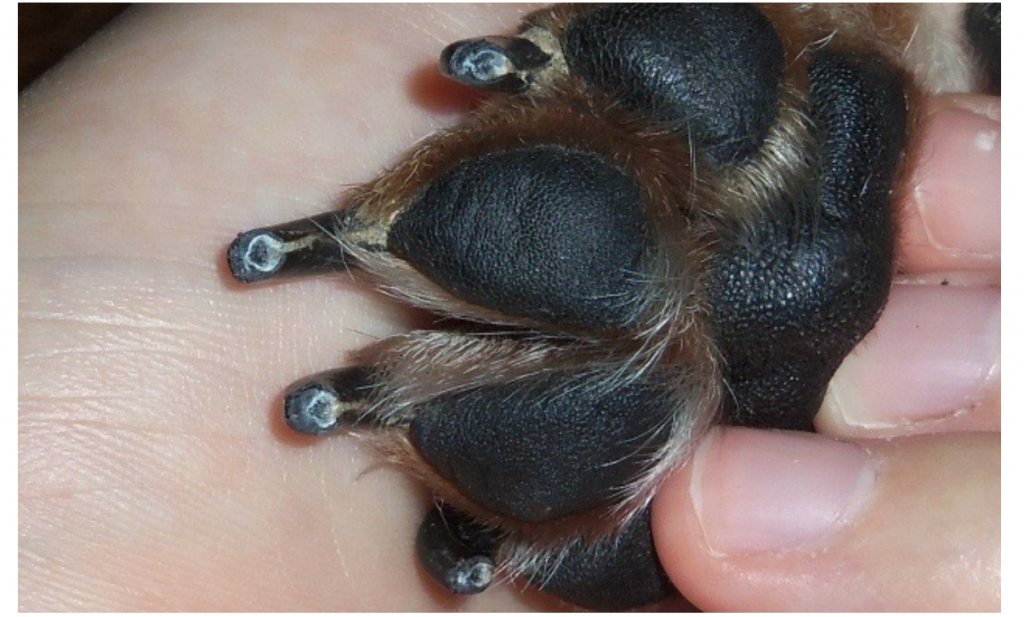
If you do not feel comfortable trimming your dog’s nails yourself, you can always seek help. Veterinary offices as well as dog groomers can trim their nails for a small fee. Some people find that having someone else trim their dog’s nails is worth the money to avoid the stress of doing it themselves. If your dog is comfortable in this situation, this is a great way to get the dreaded nail trimmings done.
Nail trimming for your dog can be a traumatic experience, and it’s important to remember to approach is slowly. Slowly introduce the dog to the tools used. Rub the nail trimmers across their feet. Let the nail grinder run without using it on their nails. The better the experience your dog has with these tools prior to using them, the better they’ll be in the long run.
Good luck, and safe trimming!
For tips and tricks on training your dog, visit our Training Your Dog During Quarantine blog post.

